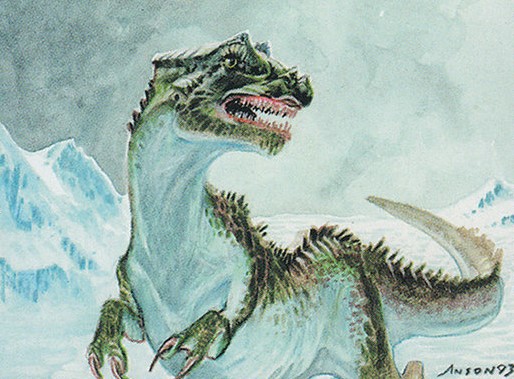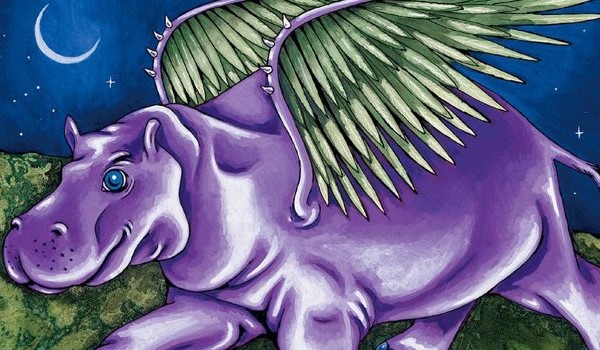Are you a Quiet Speculation member?
If not, now is a perfect time to join up! Our powerful tools, breaking-news analysis, and exclusive Discord channel will make sure you stay up to date and ahead of the curve.
Last week, we left behind the ancient world of Fallen Empires and its legions of of weird, new creature types: Homarids, Thrulls, Orggs, and Saprolings! Today, we'll continue exploring the fantastic species conceived specifically for Magic: the Gathering.
So Many Sets, So Few Unique Types
Fallen Empires was the last set from 1994, but 1995 saw five new sets... of different kinds! Fourth Edition, however, was the new core set (after Limited Edition, Unlimited and Revised), containing only reprints and featuring little in the way of discovery. Chronicles and Renaissance were called "compilation sets," and also lacked new cards.

That leaves us with the only two expansion sets of that year, this time full of new cards instead of reprints: Ice Age and Homelands. The former came out in June, the latter in October. They both introduced a good number of new creature types to the game. As usual, however, we will only take into account those creatures that are unique to the Magic: The Gathering franchise. Which, sadly, means we'll have no choice but to snub Badgers and Dinosaurs.
From Ice Age to Alliances
Indeed, Homelands is so loaded with real-world animals and references that it did not introduce a single creature type unique to Magic. And Ice Age only created one brand-new species, which will be discussed in a minute. So to broaden our scope, we'll have to jump into the following year, with Alliances (June 1996).
Ice Age and Alliances make for a weird couple. For most of Magic's history, we have been used to blocks of three expansions—one large and two small. The Ice Age block is an exception, as it was only made up of two sets until the release of Coldsnap in 2006. As a matter of fact, back in the days, Homelands was considered the second set and Alliances the third, which made no sense given the absence of cohesion across those expansions.
Nonetheless, Ice Age contains the first Lhurgoyf, while Alliances contains the first Graveborn and the first Phelddagrif. Or, to be more precise, the first card able to generate a Graveborn token and the first Phelddagrif. Calling back to Tetravites and Saprolings, Graveborn too is a token-only type.
Lhurgoyf
Let's start with Lhurgoyf, one of the most representative and weird creature types in Magic. And this was true even before the arrival of Tarmogoyf! Lhurgoyf are scavenger creatures with very long limbs and way too developed teeth. They come in all colors, although the best one is of course green.
[draft title]
The name of the original Lhurgoyf creature is... Lhurgoyf. No big surprise; same deal Atog, Orgg, Homarid, and so on. However, in this case the tribe grew, and today ten creatures share the type. Odyssey contained the highest number, thanks to a cycle of five, or one for each color. Other Lhurgoyfs were released in Planar Chaos, Future Sight, and Modern Horizons 2.
This tribe also birthed a creature that for quite a few years was simply the best one ever printed: Tarmogoyf, or usually just Goyf. Goyf wasn't just a must if you played green, but a reason to splash green in decks that would normally not play that color. It was played in Mono Blue Control, and even in the sideboard of UR combo decks based on Pyromancer Ascension, among many others.
Fifteen more years have passed since the arrival of Tarmogoyf, and many other great creatures were printed, reducing its uniqueness. Nonetheless, it's still a very efficient beater, and despite its affordable price remains sought after. In any case, it will always be remembered as a cornerstone. After all, it was one of the very few cards that was able to shape the game and impact every format where you could play it.
Phelddagrif
Onto Alliances, and a creature that is more or less the opposite of Tarmogoyf. The first creature to bear the type Phelddagrif is of course the Phelddagrif. If Lhurgoyf are scary and awful looking, Phelddagrif are charming and reassuring. As reassuring as a purple winged hippo can be...
[draft title]
Only two exist: the titular first one from Alliances, and the second, Questing Phelddagrif, from Planeshift. They are both 4/4 creatures for four mana in Bant colors, and share having a trio of activated abilities. Neither is strong enough to be played outside of kitchen table settings, as all their abilities yield slight advantages but also net the opponent some benefits.
Unfortunately, Mark Rosewater made it crystal clear that no more Phelddagrif will be ever printed, since they are considered a "vanity Easter egg." The reason for that is that Phelddagrif is an anagram of Garfield, Ph.D—the creator of Magic: The Gathering. We must therefore be content with Seedtime, stating that "The hippo grows wings to fight the condor." Don't ask; that's just how the Nantuko teaching goes...
Graveborn
Let's wrap it up with the last of today's new creature types. As we mentioned at the beginning, no Graveborn creature was ever printed. And only two cards can pump out the tokens: Balduvian Dead and Sek'Kuar, Deathkeeper. But what is a Graveborn to begin with? As the name suggests, they are basically zombies. The only difference is that they are black and red.
Sek'kuar as a commander and some synergies
Both cards will, under certain circumstances, put one or more 3/1 black and red Graveborn tokens with haste onto the battlefield. That's it. The only interest one might have in Sek'kuar is is legendary supertype, lending it to Commander play. Indeed, many lists exist revolving around this otherwise unremarkable card.
One-of Creature Types
We are still dealing with the early part of Magic's history. And one of the most peculiar (and adorable) traits of those years is the fact that so many creature types are unique to the creatures they are found on. We have seen this pattern several times already, and it will continue for a few years more.
What do you think of the creature types we discussed today? Do you lean more towards competitive breakouts (team Tarmogoyf) or purely-for-giggles expressions of creativity (team Phelddagrif and Sek'kuar)? Let me know in the comments or on Twitter, and stay tuned for next piece!





